NATRAX Aims To Become The Go-To Solution For All Tyre Industry Needs
- By Nilesh Wadhwa
- April 18, 2025
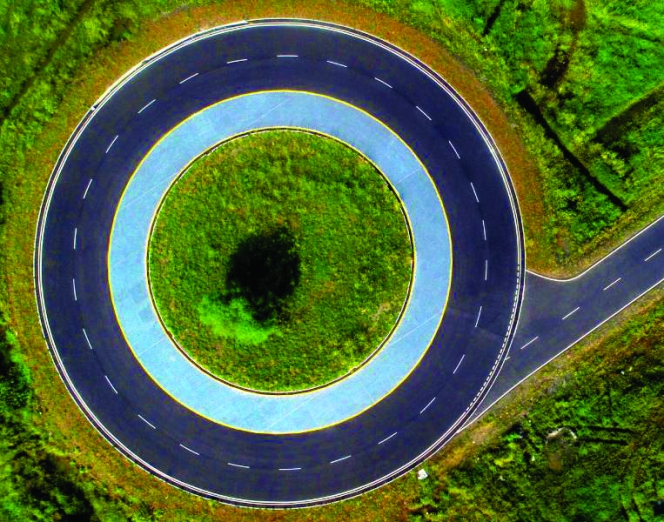
In an exclusive interaction with Tyre Trends, Dr Manish Jaiswal, Director, National Automotive Test Tracks (NATRAX), shares the key developments taking place, how the organisation is supporting the domestic tyre industry, upcoming trends and future plans.
At present, what are the services that you’re providing for the tyre industry at NATRAX?
NATRAX is a proving ground where vehicles and all their components are tested on our various tracks. A proving ground is essentially a place where a vehicle must prove itself under various challenging terrains. It needs to test and certify itself, as well as support development activities. Our tracks cater to durability, acceleration, braking, noise, endurance, high speed, grip handling and wet-grip conditions.
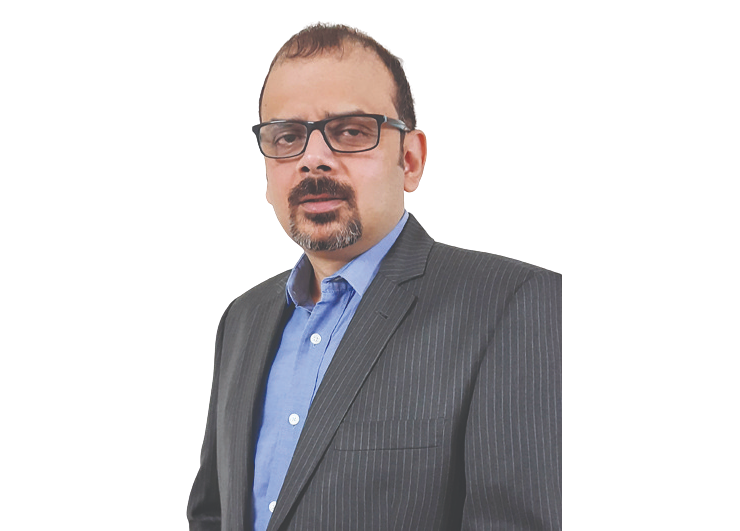
Tyres are the only point of contact between a vehicle and the surface. Therefore, for vehicle dynamics testing, the tyre industry is a crucial component. NATRAX supports tyre industry in terms of the testing requirement for acceleration, braking, cornering, handling and noise.
What about homologation?
We support the tyre industry in various ways when it comes to homologation. One of the key activities is tyre labelling, in line with the new AIS 142 requirements. Every tyre must be labelled, similar to safety ratings. This labelling involves testing for rolling resistance, wet handling, wet grip and noise.
All these activities take place at NATRAX, making us the default agency for tyre labelling. We are also planning to procure a rolling resistance machine, which should arrive in a month or two. Once that happens, the entire set of tyre labelling activities will be conducted at NATRAX for both commercial vehicles and passenger vehicles. This is one of our significant new developments.
What are the latest demands from the tyre industry?
We are in close contact with tyre manufacturers for various activities. One key demand is for wet handling and aquaplaning tests, for which they currently need to go abroad because such facility does not exist in India. Wet handling and aquaplaning on curves are critical safety features. For instance, when a thin film of water forms on the road, the tyre can lose its adhesion to the surface, so it’s vital to test grip in such conditions.
We are planning to build a special-purpose track for wet handling and aquaplaning and are requesting government funding for this. Once established, this will prevent the tyre industry from needing to go overseas for these tests.
Another growing concern is tyre wear and its environmental impact. Previously, emissions were only considered in terms of tailpipe emissions, but tyres also contribute to microplastic pollution and other wear particles that spread through road contact. We are collaborating closely with the tyre industry to find solutions – whether through a tyre wear machine or a specially designed track. This could become a major project, but we are committed to addressing this need.
Are you supporting tyre makers for their products designed for exports?
Tyre manufacturers often have to go to agencies in Japan and Germany for comfort testing. Developed markets have very different requirements because the driving conditions vary significantly from those in India. Comfort and ride quality are far more important in developed markets.
We are discussing how to address this need domestically. While it’s not an immediate concern, we must eventually ensure that the tyre industry can conduct 100 percent of their testing in India. Some tests, like those for snow and ice conditions, will always be challenging to replicate here due to cost and environmental factors. However, most other tests are within our long-term plans.
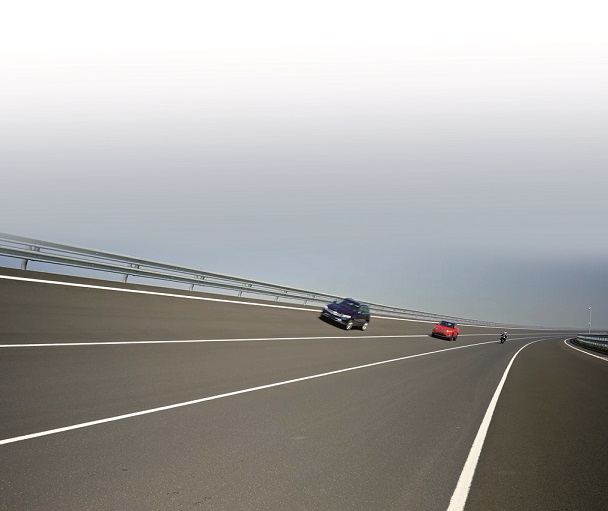
Has simulation reached a maturity level where it can replace physical testing?
Simulation has evolved significantly over the last 25–30 years, but we haven’t yet reached a point where it can fully replace physical testing. The complexities of vehicle systems – including OEM products, components, tyres, control systems, road conditions and driver behaviour – make complete reliance on simulation difficult.
India also faces challenges in developing high-fidelity simulation models. Accurate virtual replication requires the integration of confidential data from various partners, which is not easy to achieve. Nonetheless, we are planning for the future by developing the right simulation environment and infrastructure, such as high-fidelity simulators and virtual testing benches. This will help reduce dependence on track testing and streamline product development.
Do EV tyres require separate on-ground testing?
EV tyre testing largely follows the same procedures as conventional tyre testing, with standards remaining consistent across both types.
However, from a manufacturing and design perspective, EV tyres often use different materials and designs – including rubber, elastomers, fabric and steel – tailored to meet OEM requirements. These differences may eventually call for specific tests, but the current standards remain aligned.
In developed markets, there are separate summer and winter tyres. Do you think India needs this distinction?
Fortunately, India does not experience the extreme temperature variations seen in countries like the US, Canada or parts of Europe. In those regions, temperatures can range from 30 degrees Celsius to -10 degrees Celcius, necessitating different tyre types for safety and traction.
In India, extreme cold weather is limited to specific areas like Kashmir and only for brief periods. Given this, the added cost of maintaining separate summer and winter tyres is not justifiable.
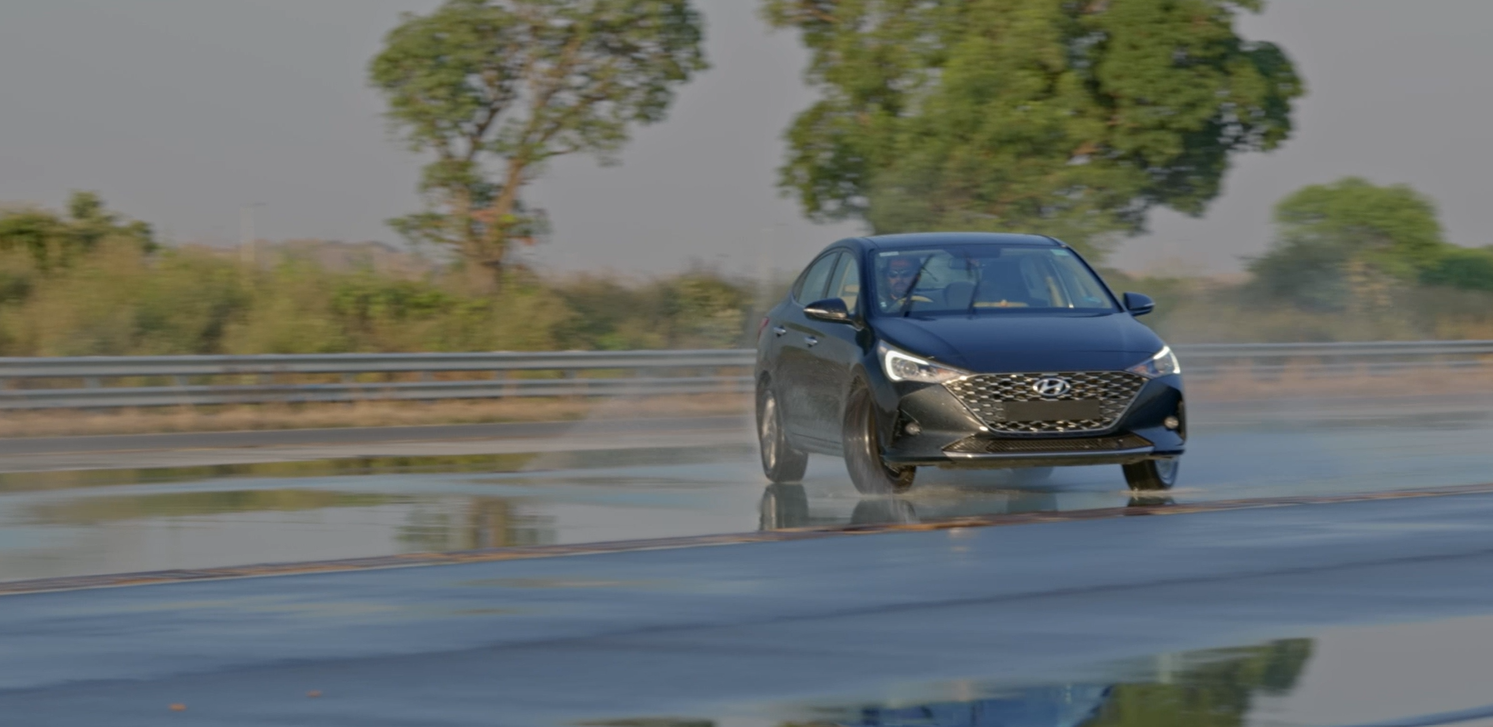
What are NATRAX’s immediate investment plans?
While we have not worked out the exact figures, we are in the process of investing significantly (in 2025) in form of rolling resistance machine and upgradation of two-three tracks for tyre industry requirements. Our immediate future plans include significant investments for a new wet handling and aquaplaning track.
We maintain close communication with the tyre industry, prioritising their requirements to support their growth and development.
Which companies are you currently working with?
We collaborate with almost all Indian tyre manufacturers and are also engaging with multinational and global tyre brands. The goal is to develop their R&D ecosystems in India.
As international players shift their development activities to India, local testing becomes inevitable. This shift will allow NATRAX to play a crucial role in supporting their R&D and testing needs.
What is the lead time for tyre makers to approach NATRAX for testing, and how long does testing typically take?
Many tyre manufacturers have teams stationed at NATRAX around the clock, so there is no lead time. Testing happens daily.
If they have special requirements, they approach us and we are usually able to accommodate them. Approximately one-third of our track usage comes from the tyre industry. With our 50-kilometre proving ground – the largest in India and one of the largest globally – we operate at an entirely different scale.
As we expand our facilities for ADAS (Advanced Driver Assistance System) and connected vehicle testing, even more tyre industry testing will take place at NATRAX. We aim to become the go-to solution for all tyre industry needs.
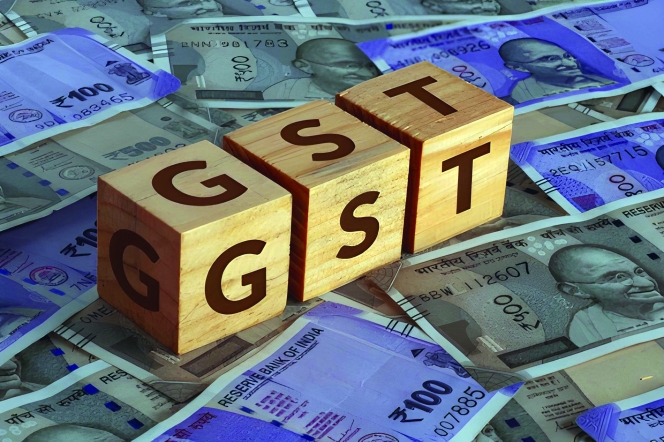
The rollout of GST 2.0 marks a defining moment in India’s economic journey – a reform that may well prove even more consequential than the original introduction of the Goods and Services Tax. Especially for a sector like tyres, the recent reduction in (GST) on tyres is far more than just a change in numbers. It is a transformative step that touches every wheel turning on India’s roads – from a farmer’s tractor to a trucker’s long-haul trailer and from a commuter’s scooter to a construction vehicle powering the nation’s infrastructure.
For years, tyres were taxed at 28 percent – the highest GST slab, clubbed with luxury and demerit goods. This categorisation never truly reflected the essential role tyres play in our everyday lives. Tyres are not a luxury. They are a fundamental enabler of mobility, supporting the movement of people and goods across cities, towns and villages. By bringing GST rates on tyres down to a more rational level, the government has addressed a long-standing anomaly and set the stage for widespread benefits across the economy.
The most visible impact of this move will be felt on the ground – literally. Lower GST means more affordable tyres for all users. Especially for transporters and fleet operators, tyres account for a significant chunk of vehicle running costs. A reduction in tax translates into lower replacement costs, freeing up working capital and improving operational margins. Farmers, small traders, delivery personnel, service providers, transporters – every segment that relies on mobility will feel this relief.
India has been working hard to bring down logistics costs, which are believed to be about 13–14 percent of GDP – much higher than global benchmarks. Tyres have a direct bearing on vehicle operating efficiency, fuel consumption and maintenance schedules. When tyres become more affordable, operators can replace tyres on time, and run vehicles more efficiently.
This naturally leads to lower logistics costs. Reduced logistics costs ripple across the value chain, helping industries move goods faster and at lower cost. This aligns perfectly with India’s ambition to become a more globally competitive manufacturing and trading hub.
Tyre industry’s story is not just urban – it’s deeply rural as well. Tractor tyres, power tiller tyres and tyres for animal-drawn vehicles are integral to the agricultural economy. A reduction in GST brings meaningful relief to farmers and small cultivators who rely on these tyres for their daily operations. By easing this cost, the government has extended direct support to rural mobility and agricultural productivity – an often underappreciated but critical outcome of this reform.
One of the most powerful yet often overlooked impacts of this decision lies in road safety. Worn-out tyres are a major cause of road accidents, particularly on highways. High replacement costs often lead to tyres being used well past their safe life.
With lower GST making new tyres more accessible, both individual motorists and commercial fleet owners are more likely to replace tyres on time, keeping vehicles safer and reducing accident risks. This complements the government’s broader road safety agenda, making highways not just faster but safer for everyone.
For the Indian tyre industry, which is one of the largest in the world, this reform is a game changer. It creates a more balanced tax structure, supports better cash flow, improves compliance and strengthens the competitiveness of domestic manufacturers. It will also encourage investment and capacity expansion, enabling the industry to serve growing domestic demand and tap export opportunities more effectively.
The GST reduction on tyres is a strategic, forward-looking policy decision that will benefit the entire mobility ecosystem. It acknowledges the essential role tyres play – not just as a product, but as a critical enabler of transportation, logistics, rural livelihoods and road safety.
As this reform takes root, its positive impact will be felt by consumers, businesses, farmers and industries alike. The tyre industry, represented by ATMA, welcomes this move wholeheartedly and remains committed to working alongside the government to strengthen India’s journey towards affordable, efficient and safe mobility for all.
The author is Director General of the New Delhi-based tyre industry association, Automotive Tyre Manufacturers’ Association (ATMA).The views expressed here are personal.
WACKER Secures Gold Medal In EcoVadis Sustainability Rating
- By TT News
- December 18, 2025
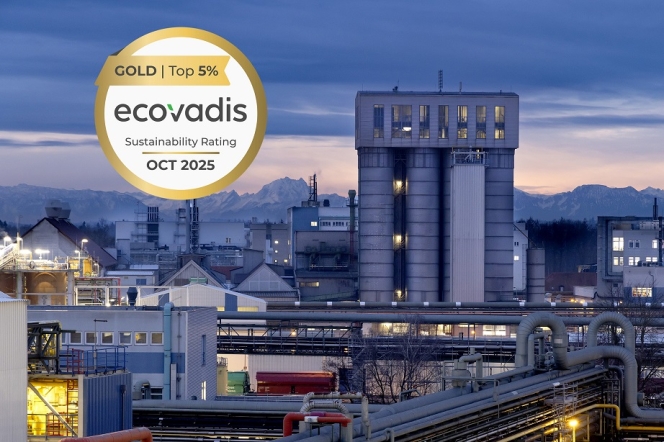
WACKER has earned the 2025 Gold Medal from the independent rating agency EcoVadis, marking its continued recognition for sustainable practices and responsible corporate governance. This distinction places the company within the top five percent of all businesses assessed by EcoVadis (over 1,000 companies globally). WACKER's overall score improved from 77 points (in 2024) to 79 points, driven largely by enhanced reporting and concrete actions focused on Scope 3 emissions and ethical standards.
The EcoVadis assessment measures the quality of a company’s sustainability management through a methodology grounded in international frameworks like the Global Reporting Initiative, the UN Global Compact and ISO 26000. Performance is scored from 0 to 100 across four core areas: environment, labour and human rights, ethics and sustainable procurement, using 21 specific indicators.
In line with its commitment, WACKER provides its EcoVadis evaluation to customers as a standardised and credible validation of its sustainability efforts. The company has also defined ambitious climate targets, aiming to halve its absolute greenhouse gas emissions by 2030 relative to 2020 levels. Progress is already evident, with a 30 percent reduction achieved as of 2024. Looking further ahead, WACKER strives to reach net-zero emissions across its operations by the year 2045.
Peter Gigler, Head of Corporate ESG, WACKER, said, “The result confirms our initiatives in many key areas. It provides our customers with invaluable proof.”
Craig Borman Appointed As Head Of OTR At BKT USA
- By TT News
- December 18, 2025
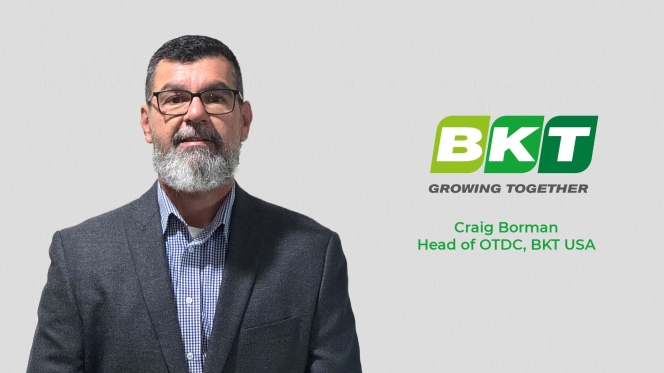
Balkrishna Industries Ltd (BKT Tires), a global leader in off-highway tyre manufacturing, has appointed Craig Borman as Head of OTR at BKT USA. The appointment is in line with BKT’s long-term strategy through 2030.
Borman brings with him 20 years of experience across off-road equipment, tyres and rubber tracks. He will play a key role in leading BKT USA's OTR team and expanding the company's presence in this market while increasing awareness of the value and dependability of BKT's range of products.
Borman said, “I’m extremely excited to join the BKT family and to build off the successes that this team has already achieved. I look forward to engaging with our partners, determining how we can accelerate our mutual growth and working towards achieving BKT’s vision of being a recognised leader in the OTR segment.”
Christian Kötz To Succeed Nikolai Setzer As Continental CEO In Planned Handover
- By TT News
- December 18, 2025
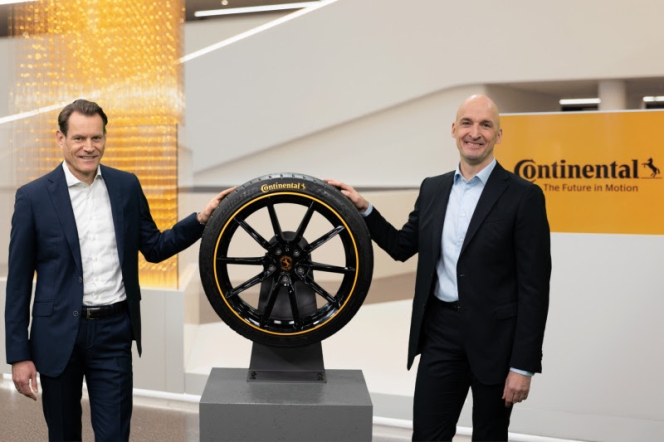
The Supervisory Board of Continental AG confirmed a significant leadership transition during its meeting on 17 December 2025. Christian Kötz will be appointed as the new Chairman of the Executive Board and Chief Executive Officer, effective 1 January 2026. He succeeds Nikolai Setzer, who will step down from the Executive Board on 31 December 2025. Setzer's departure follows more than 16 years as a board member, including the last five years in the CEO role, and occurs by mutual agreement as the company reaches a pivotal point in its strategic evolution.
This planned change in leadership aligns with the substantial progress Continental has made in its transformation into a pure-play tyre company. Major structural milestones have been achieved, including the spin-off of Aumovio and the signing of an agreement to sell the Original Equipment Solutions (OESL) business area. Regarding the planned 2026 sale of ContiTech, internal preparations are largely complete. The market outreach phase has concluded, and a structured sales process is scheduled to begin in January 2026, setting the stage for the final step in the corporate realignment.
Kötz’s extensive background within the tyre business, dating back to 1996, positions him to lead this final phase. A member of the Executive Board since 2019, his previous leadership roles within the Tires group sector included responsibility for the passenger car tyre replacement business in the EMEA region, the original equipment and commercial vehicle tyre business units and global research and development for passenger car tyres. His many years of trusted collaboration with Nikolai Setzer are expected to ensure continuity during the transition.
Kötz will lead an Executive Board comprising several key figures. Alongside him and Philip Nelles, who has headed the ContiTech group sector since 2021, are Roland Welzbacher and Ulrike Hintze. Welzbacher joined the board in August 2025 and assumed the role of Chief Financial Officer on 1 October 2025. Hintze was appointed to the board on 1 July 2025, serving as Chief Human Resources Officer and Director of Labour Relations. This board will be responsible for driving the tyre business forward, completing the corporate realignment and, following the sale of ContiTech, integrating the remaining group functions into the tyre organisation.
Wolfgang Reitzle, Chairman of Continental’s Supervisory Board, said, “Nikolai Setzer has been instrumental in shaping Continental, realigning the organisation and paving the way for three strong, independent companies. For this, he has the thanks of the entire Supervisory Board as well as my personal gratitude. With this handover, we are consolidating responsibility for the tyre business, the realignment and the remaining tasks of the group functions in one role. Christian Kötz is one of the most distinguished managers in the global tyre industry. With his extensive experience and passion for Continental, we firmly believe he is the right choice to lead the company successfully into the future.”
Setzer said, “In recent years, we have succeeded in transforming a diverse portfolio of businesses into three strong, independent champions. After 28 years at Continental, now is the right time for me to hand over responsibility to Christian Kötz. I’m extremely grateful for the journey we’ve all shared and proud of what we’ve all achieved together. I firmly believe that the tyre business, ContiTech, Aumovio and OESL have a promising future ahead.”
Kötz said, “I would like to thank the Supervisory Board for its trust and am excited about this new responsibility. Continental has been my professional home for three decades. Together with the Executive Board team and all colleagues throughout the company, we will complete the realignment and continue the success story of our tyre business.”







Comments (0)
ADD COMMENT